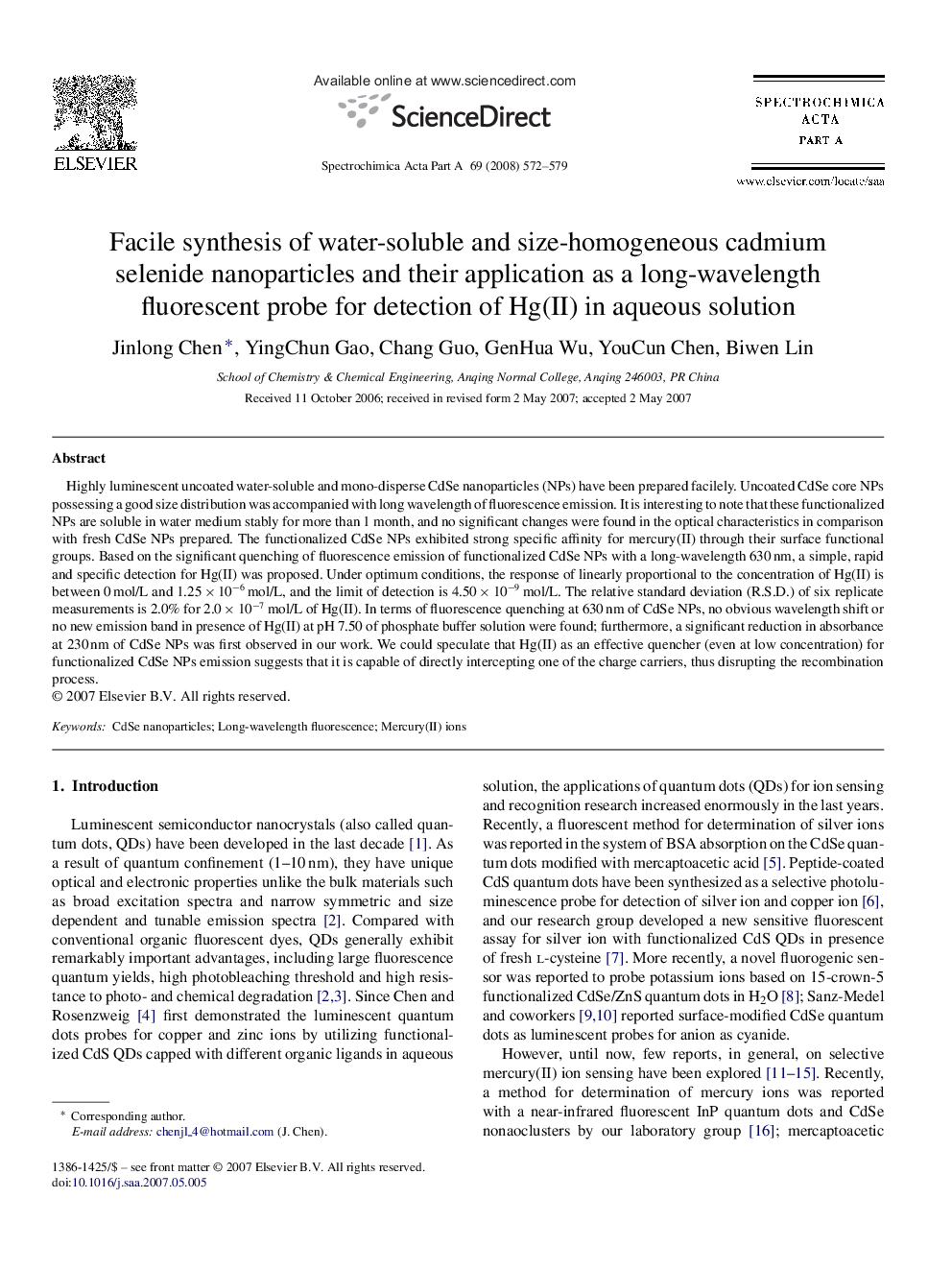| Article ID | Journal | Published Year | Pages | File Type |
|---|---|---|---|---|
| 1235327 | Spectrochimica Acta Part A: Molecular and Biomolecular Spectroscopy | 2008 | 8 Pages |
Highly luminescent uncoated water-soluble and mono-disperse CdSe nanoparticles (NPs) have been prepared facilely. Uncoated CdSe core NPs possessing a good size distribution was accompanied with long wavelength of fluorescence emission. It is interesting to note that these functionalized NPs are soluble in water medium stably for more than 1 month, and no significant changes were found in the optical characteristics in comparison with fresh CdSe NPs prepared. The functionalized CdSe NPs exhibited strong specific affinity for mercury(II) through their surface functional groups. Based on the significant quenching of fluorescence emission of functionalized CdSe NPs with a long-wavelength 630 nm, a simple, rapid and specific detection for Hg(II) was proposed. Under optimum conditions, the response of linearly proportional to the concentration of Hg(II) is between 0 mol/L and 1.25 × 10−6 mol/L, and the limit of detection is 4.50 × 10−9 mol/L. The relative standard deviation (R.S.D.) of six replicate measurements is 2.0% for 2.0 × 10−7 mol/L of Hg(II). In terms of fluorescence quenching at 630 nm of CdSe NPs, no obvious wavelength shift or no new emission band in presence of Hg(II) at pH 7.50 of phosphate buffer solution were found; furthermore, a significant reduction in absorbance at 230 nm of CdSe NPs was first observed in our work. We could speculate that Hg(II) as an effective quencher (even at low concentration) for functionalized CdSe NPs emission suggests that it is capable of directly intercepting one of the charge carriers, thus disrupting the recombination process.
